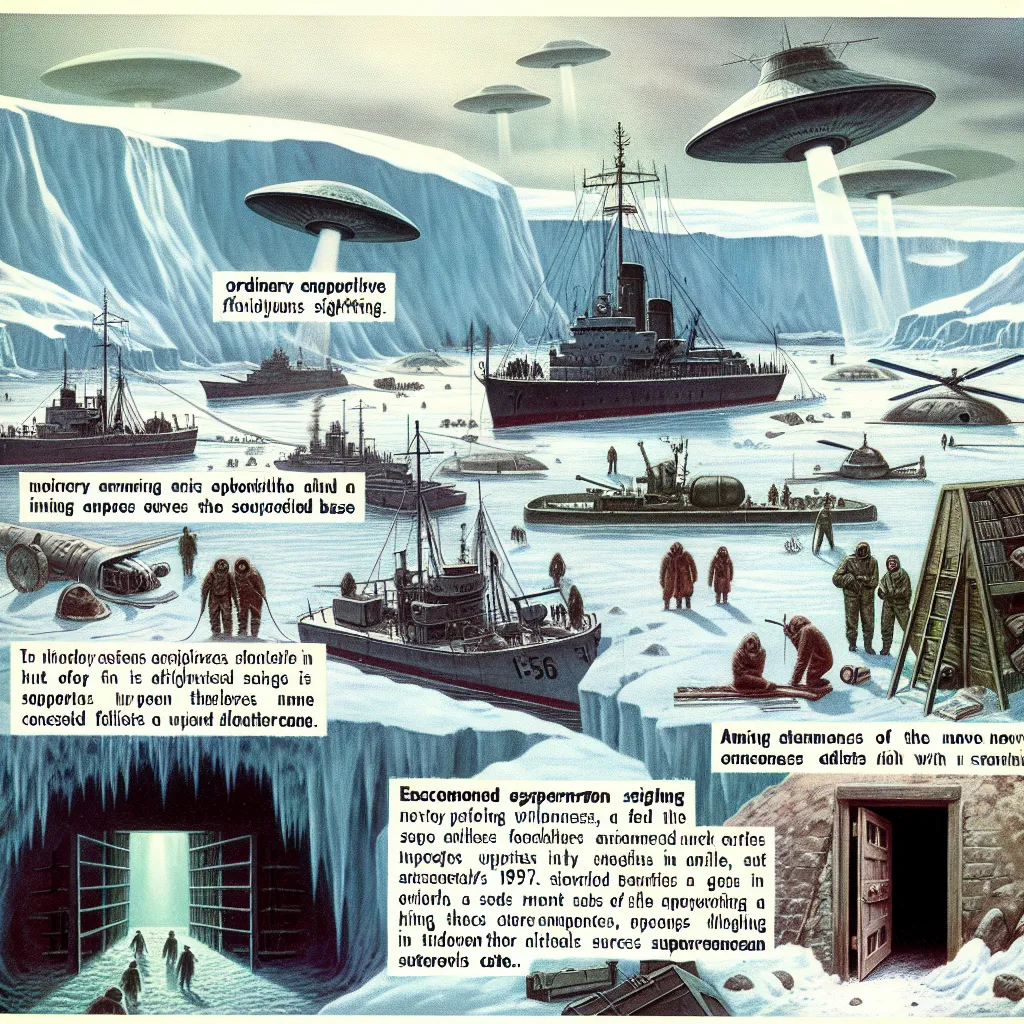Operation Highjump: The Untold Story
Operation Highjump kicked off in August 1946, marking the largest and most heavily armed naval task force ever sent to Antarctica. Leading the mission was Admiral Richard E. Byrd, one of history’s most notable naval officers. While the official reason for the expedition was scientific research and military training, whispers suggested deeper, more secretive objectives.
Rumors swirled that one goal was to extend American sovereignty over the icy continent, a claim often denied by the government. Another tantalizing theory was that the mission aimed to locate and dismantle a covert Nazi base and capture their rumored secret weapon - flying saucers. Yes, UFOs were allegedly sighted, believed to be Nazi test flights, and Byrd was sent to investigate.
In December 1938, with the horizon of war looming, Hitler poured resources into a quest for ancient artifacts believed to hold immense power. The SS Schwabenland was dispatched to Antarctica, carrying scientists, engineers, and members of the Thule Society, a German occultist group. Their mission was said to involve establishing contact with an advanced race living in the hollow Earth, hypothesized to be accessible through the South Pole.
The ship reached the Antarctic coast a month later, mapping expansive areas and discovering what was described as an Arctic oasis. This 300-square-mile ice-free zone with warm water and plant life seemed ideal for a base, especially for U-boats. Here, the Nazis were believed to have established Base 211, a massive underground city-like complex.
As World War II progressed, Base 211 was transformed from an offensive structure into a potential escape route for the Nazis. Toward the war’s end, many Nazis allegedly escaped justice, with a significant number hiding in South America. Notably, one such escapee was Hans Kamler, in charge of Hitler’s secret weapons program, along with his plane, both of which mysteriously vanished.
Fast forward to Operation Highjump. Admiral Byrd, with a decorated military background, led the task force with almost 5,000 men aboard 13 ships, including an aircraft carrier loaded with planes and helicopters. The official story of training and scientific research was widely seen as a cover. The real mission? Detecting and destroying the rumored Nazi base and capturing any flying saucers.
Upon arrival in January 1947, the team began constructing a base named Little America. However, after just 40 days, the mission was abruptly cut short. What led to this sudden retreat? Eyewitness accounts, declassified records, and Byrd’s own journal hint that strange and potentially hostile encounters forced their hand. Byrd later expressed concerns about the possibility of aerial attacks on the U.S. from the poles, a statement that fueled further speculation.
Back in Washington, after a thorough debriefing, Byrd never discussed Operation Highjump publicly again. The mission was classified, and sailors were warned against speaking out, under threat of imprisonment. Byrd’s secret diary, later revealed by his son, describes surreal events, including an encounter with a giant mammoth-like animal and a warm valley in what should have been an icy landscape.
More intriguingly, the diary recounts Byrd’s capture by beings from a technologically advanced hidden city. These beings, calling themselves the Arianni, warned against the reckless use of atomic energy by humans. Byrd was chosen to convey this message to the world leaders.
Although much of Byrd’s secret diary can be debunked, elements of the Operation Highjump story linger in popular imagination. For instance, the Schwabenland’s mission was primarily for whaling purposes, not for establishing an underground base. Nazi artifacts have been found in the North Arctic, not the South.
Yet, the presence of such an armed force in a supposedly peaceful scientific expedition raises questions. The Soviets, after their own examination of the mission, believed it was designed to seek out and destroy a Nazi base. The veracity of UFO sightings and unidentified flying craft remains hotly debated.
The Antarctic Treaty of 1959, which forbids free access to the continent, only deepens the mystery. With Operation Highjump terminated prematurely for reasons still speculative, and the intact Arctic Oasis sighted by Byrd, there’s a lot to unravel.
Did Byrd’s team discover something so extraordinary that it’s been kept secret for decades? The story interweaves plausible military actions with incredible accounts of advanced hidden civilizations, leaving us to wonder what truly lies beneath the icy expanse of Antarctica.
If there’s one thing all governments agree on, it seems it’s that whatever secrets Antarctica holds, they must remain untouched. Whether it’s due to ancient civilizations, undisclosed military installations, or unacknowledged aerial phenomena, one truth prevails: the full story of Operation Highjump remains one of the most intriguing enigmas of our time.






